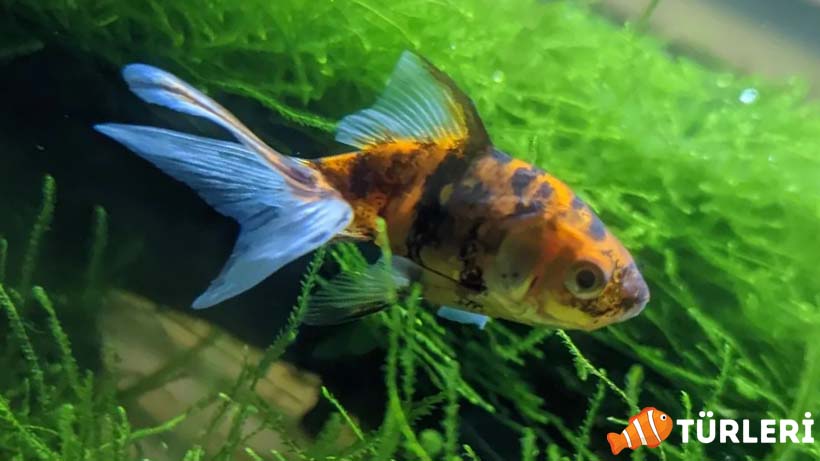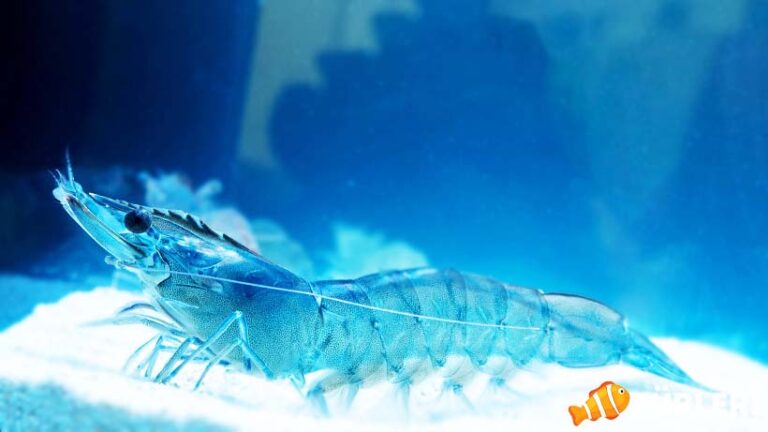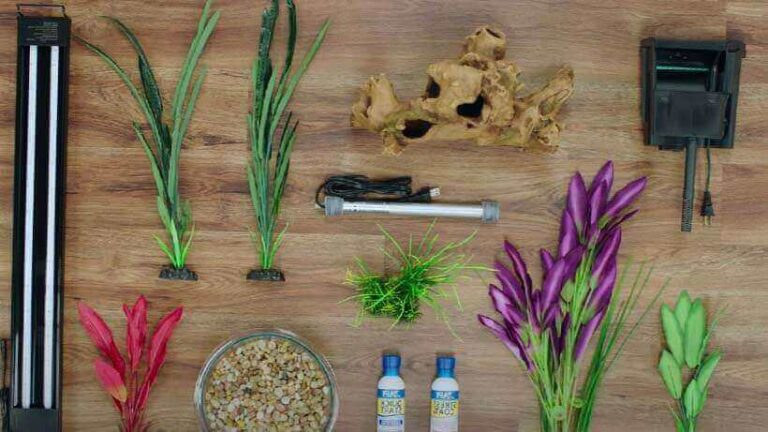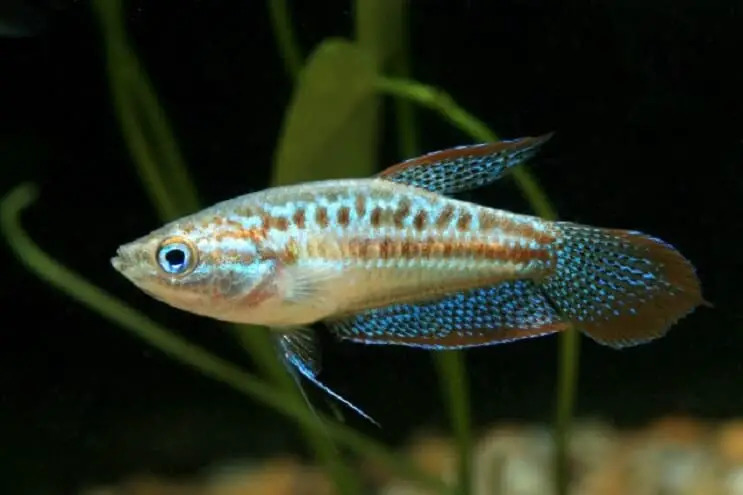Fan-tailed Goldfish Guide
The fan-tailed goldfish is one of the great aquarium fish that both beginners and experienced individuals can care for. This guide will provide you with all the information you need about the fan-tail!
Compared to many ornamental fish, fan-tailed goldfish require much less maintenance and have a stunning appearance in freshwater aquariums.
With this guide we have created, you will gain knowledge about the care, characteristics, diseases, breeding, and much more about the fan-tailed goldfish.
Fan-tailed Goldfish Species Summary
| Diğer İsimler: | Yelpaze kuyruk, Kuyruklu balık, 3 kuyruklu japon balığı, Fantail goldfish |
| Scientific Name: | Carassius auratus |
| Origin: | Asia |
| Diet: | Omnivore |
| Behavior: | Peaceful |
| Behavior Towards Its Own Kind: | Peaceful |
| Swimming Area: | Bottom and middle |
| Water Temperature: | 17 – 24 °C |
| Water Hardness: | 4 – 20 GH |
| pH Level: | 6.0 – 8.0 |
| Minimum Aquarium Volume: | 60 Liters |
| Adult Size: | 20 cm |
| Reproduction: | Lay eggs |
| Lifespan: | 5 – 8 years |
| Care: | Easy |
Characteristics
The fan-tailed goldfish has several distinctive features that make it stand out among known aquarium fish and contribute to its popularity. In some stores, they are sold as the 3-tailed goldfish. A sea fish called the leaf fish is also referred to as a 3-tailed fish, so this name is not commonly used.
In some cases, fan-tailed goldfish can develop telescopic eyes when they are 6-8 months old. In such situations, the fish seller might try to sell it as a telescopic goldfish.
Appearance and Behavior

Instead of the long thin body found in standard fish, it has a body reminiscent of an egg shape. Their bodies appear extremely bloated. That’s why they are known as cuter-looking fish. Structurally, they are considered among the somewhat larger goldfish.
Its main characteristic, which also gives it its name, is the fan-like double tail fins. From above, it looks triangular, while from the side, it resembles a fan. Although known as a 3-tailed, it actually has 2 separated fins.
This long-tailed ornamental fish usually has bright, metallic scales. They can have many different color palettes. The most commonly seen colors are orange, black-red, and yellow. In rarer bred species, pure white, metallic blue, and bright black colors are seen.
The average adult size of the fan tail is 17 cm. This size is from head to the tip of the tail fin.
Like other goldfish species, this species is also quite gentle and moderate. They are peaceful fish that swim on their own in the aquarium and get along well with almost all other fish.
Natural Habitat
In its natural habitat, like most goldfish, this species lives in slow-flowing rivers and calm lakes. They are found in Asia and Central Asia. Although their homeland is China, it is known that they also live in Japan.
The waters they inhabit are high-altitude, cold waters. In fact, one of the most significant features that categorize them as hardy aquarium fish is this. The waters in their habitat are 6.0-8.0 pH and have soft-hard gH values.
Sex Determination
The methods generally used for goldfish apply. The first thing to look for when determining gender is the white spots that form on the gills of male fish during the breeding season.
Again, additionally, though not conclusive, females’ bellies appear rounder compared to males.
Which Fish Do They Live With?
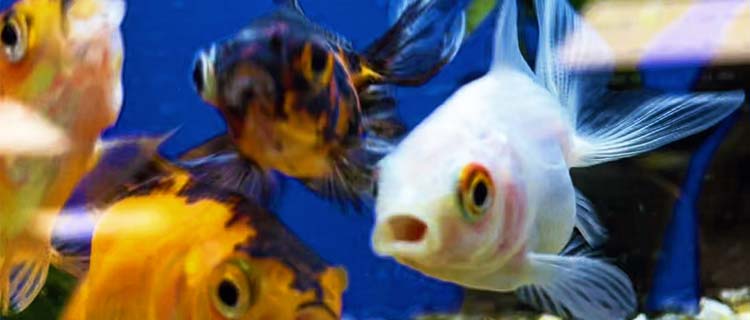
In general, goldfish are very gentle, peaceful creatures. However, you may have difficulty choosing fish to accompany the fan-tailed goldfish. The reason is that this fish is very gentle-natured and therefore may be attacked by other fish.
Even if you choose one of the smaller aquarium fish, it’s essential not to pick the aggressive ones. The fan tail is a slow-swimming, cumbersome fish and thus cannot defend itself. Otherwise, the first thing they will attack is the fish’s fins.
Fan-tailed goldfish can live with the following fish:
- Otocinclus affinis
- Neon and cardinal tetra
- Molly fish
- Cherry shrimp
- Amano shrimp
- Apple snail
- Zebra danio
- Dwarf catfish
- Panda cory
- Telescope goldfish
- Celestial eye goldfish
- Lionhead Goldfish
What are Similar Species?
Many goldfish species are similar in terms of care. Only a rare few among them have medium difficulty in care.
In appearance, the goldfish species that most resemble the fan-tailed are the Butterfly tail goldfish, Veil tail goldfish, and Oranda goldfish.
Care
The care of the fan-tailed goldfish is quite straightforward. It’s also an excellent aquarium fish for beginners. However, you shouldn’t keep goldfish in somewhat high water temperatures like tropical fish.
You should keep them in cooler waters, with temperatures between 17-24 degrees Celsius. In addition, we will discuss the necessary aquarium environment and water values.
Aquarium
Let’s start by talking about the size of the aquarium. Fan-tailed goldfish do not grow excessively, are slow swimmers, and are not very active. Therefore, they require a small to medium-sized aquarium.

Single Housing If you are keeping just one fan-tailed goldfish, an aquarium with a capacity of 50-60 liters will suffice to keep it happy. For 2 or more fan-tailed goldfish, you need to increase this volume by 50 liters for each fish.
If they are to be kept in mixed aquariums with other compatible fish, this volume should be adjusted again according to the additional fish. For instance, if you’re going to keep one fan-tailed goldfish with several small species of fish and various shrimp, an aquarium of 100 liters or more will be adequate.
Fun Fact: In Asia, many people keep these fish in garden ponds, much like koi fish. If you have such a decorative pond and can ensure the minimum water temperature, you can also add them to your pond.
As for aquarium decorations, open space is crucial for these fish; they won’t be comfortable in overcrowded decorative settings. Therefore, a few rocks or similar objects as decorations will suffice.
The most suitable material for the bottom is sand or fine gravel. Since the fish can take the material on the floor into its mouth and spit it out, avoid using coarse particles. Otherwise, it might get stuck in the fish’s mouth or harm it.
Lastly, not every plant is suitable for these species. They can uproot plants in a short time, leaving not even a single plant in the aquarium. So if you are setting up a planted aquarium, use plants with thick stems and leaves.
Water Values
Fan-tailed goldfish naturally live in slow-flowing cool waters. Therefore, in an aquarium, it’s essential not to create a strong current and to keep the water cool. However, they will not challenge you in terms of water parameters.
The most suitable water values for fan-tailed goldfish are:
- Temperature: 17-24 degrees Celsius
- pH levels: 6.0 to 8.0 (well-aerated tap water is sufficient)
- Water hardness: 4 – 20 gH (carbonate hardness, again well-aerated tap water is enough)
In addition to these, you should perform a weekly water change of about 25-30% and remove accumulated waste from the bottom of the aquarium.

Feeding And Foods
Again, when it comes to food, they are an easy species. They consume all suitable, high-quality foods for aquarium fish without hesitation. The challenging part for the fan-tailed goldfish is feeding it correctly.
If you don’t feed them correctly, unfortunately, you can encounter various diseases.
There’s no harm in giving them live food; in fact, it will be beneficial for them. You can provide bloodworms and brine shrimp. Additionally, occasionally giving them small amounts of foods like lettuce, cucumber, and peas can prevent their digestive system from getting fatigued.
How To Feed Fan-Tailed Goldfish?
The best way to feed the fan-tailed goldfish is to give small amounts twice a day. If the fish cannot consume all the food within 2 minutes of giving it, it means you are feeding it too much.
It’s crucial to give just the right amount of food when feeding goldfish. Overfeeding can lead to various digestive issues and diseases.
How Much Food Do They Consume?
You should feed them twice a day and only as much as they can finish entirely within 2 minutes. For instance, for a single adult fan-tailed goldfish, you can try giving half a teaspoon of flake or granule foods as a starting point.
How Long Can They Go Without Food?
We certainly do not recommend starving your fish; after all, they are living beings too. However, under certain circumstances, they might need to go without food.
In such situations, adult goldfish can withstand 7-10 days without food, while juveniles can last 4-5 days.
To avoid such situations and to maintain the health of your fish, we recommend obtaining an automatic fish feeder.
Üreme
Üremesi ve üretmesi kolay türlerdendir ve yumurtlama yolu ile ürerler. Çiftleşme zamanı geldiğinde erkek balık dişinin karın kısmına hafifçe vurarak onu yumurtaları bırakmaya teşvik eder.
Sağlıklı bir dişi yelpaze kuyruklu japon balığı iyi bir erkek balıkla çiftleştirildiğinde ortalama 1000 adet yumurta döker. Yumurtalar yapışkandır ve düştüğü yere yapışıp kalır. Yumurtlamanın ardından erkek balık yumurtaları döller ve 3-5 gün içerisinde yavrular yumurtadan çıkar.
Reproduction
They are among the species that are easy to reproduce and they reproduce through laying eggs. When it’s time for mating, the male fish gently taps the female’s belly to encourage her to release the eggs.
A healthy female fan-tailed goldfish, when mated with a good male, can lay an average of 1000 eggs. The eggs are sticky and will stick to where they land. After laying, the male fish fertilizes the eggs, and within 3-5 days, the fry will hatch from the eggs.
Breeding Fan-Tailed Goldfish
The most effective method for breeding is to set up a separate fan-tailed goldfish aquarium that mimics the natural environment for egg-laying. The 2 fish intended for mating or several fish in groups are added to this aquarium.
Initially, having the water temperature at 17-18 degrees Celsius will encourage rapid breeding. After adding the fish, increase the temperature by 2 degrees every day until it reaches 24 degrees. This will accelerate their mating.
If given the chance, goldfish will eat the eggs. Therefore, after laying the eggs, you should be careful, and either the adults or the eggs should be removed from the aquarium. To speed up the free-swimming phase of the fry, stabilize the temperature at 21-22 degrees.
The fry will feed on their own sacks for 1-2 days. After this, you can feed them egg yolk and Artemia (can be started when they are 1 week old). Once they reach about 1 cm, you should supplement with high-quality prepared foods.
Diseases
The fan-tailed goldfish is sensitive to many diseases that other aquarium fish may contract. The most commonly observed diseases are: swimming disorders, white long feces, parasites and fungi, kidney disease, and pop-eye.
For details, symptoms, and treatment methods of all these diseases, refer to: Common Goldfish Diseases And Treatment Methods.
FAQs
How Long Does a Fan-Tailed Goldfish Live?
Generally, the lifespan of goldfish is between 5 to 10 years. For the fan-tailed variety, the maximum recorded age has been 8 years.
How Big Can a Fan-Tailed Goldfish Grow?
Typically, in aquariums, they can grow up to 20 cm (around 8 inches). However, in ornamental ponds or very large aquariums, it is known that they can reach sizes of up to 30 cm (around 12 inches).

